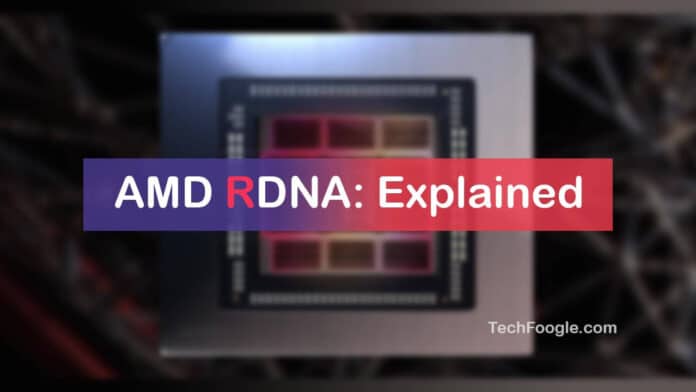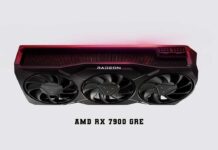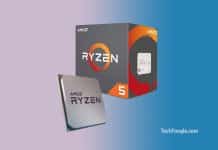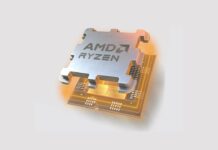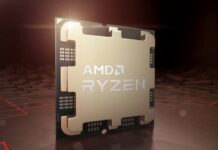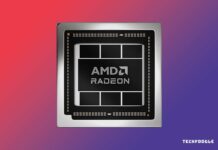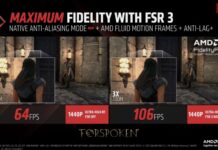AMD’s RDNA is the latest in a long line of GPUs that the company has produced. RDNA is based on the GCN architecture and is manufactured on the 7nm process. It is designed for use in gaming and general-purpose computing.
The RDNA architecture is a significant departure from the previous GCN architecture.
It features redesigned compute units, new memory controllers, and an enhanced multi-level cache hierarchy. These changes result in a significant increase in performance and power efficiency.
Table of Contents
What is AMD?

Advanced Micro Devices, Inc. AMD is a semiconductor company based in Santa Clara, California, that creates specialized hardware for the computer industry. Its main products include microprocessors, motherboard chipsets, embedded processors, and graphics processors for servers, workstations and personal computers, and home media centers.AMD was founded in 1969 by a group of engineers from Fairchild Semiconductor. The company grew to become one of the largest semiconductor companies in the world, with a presence in over 50 countries. AMD’s product line includes CPUs, GPUs, APUs, and server processors. The company also manufactures motherboards, chipsets, embedded processors, and graphics cards for various applications. In addition to its semiconductor business, AMD provides technology solutions for game consoles, cloud computing, virtualization, and other emerging markets.
(Also see: What is Amazon Athena / AWS Athena? Explained)
What is RDNA? Details
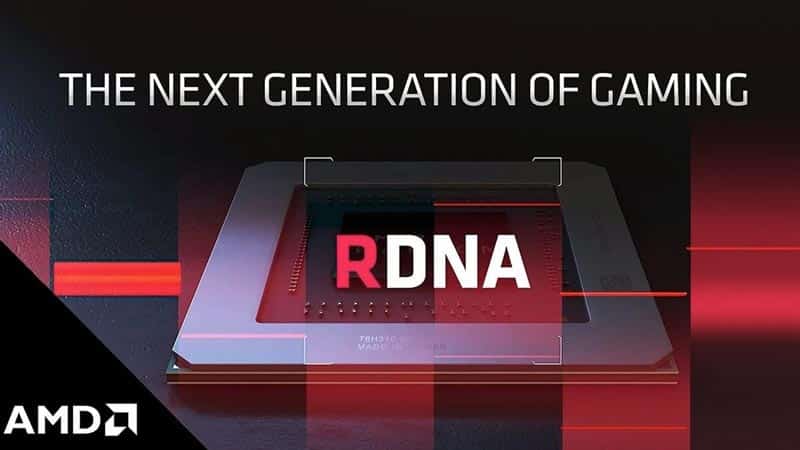
RDNA is a microarchitecture used in AMD’s GPUs. It is the successor to GCN and is used in the company’s Navi line of GPUs. RDNA was designed with performance and power efficiency in mind and significantly increased over GCN in both areas. Regarding raw performance, RDNA is around 1.5x faster than GCN while being significantly more power efficient. It makes RDNA ideal for high-end gaming GPUs and mobile devices where power efficiency is paramount.
AMD’s Radeon RDNA is a new graphics architecture that supports real-time ray tracing, variable rate shading, and other advanced features. RDNA is the successor to the GCN architecture that has been used in AMD’s previous generation of GPUs.
AMD RDNA is a new microarchitecture designed from the ground up for gaming workloads. It delivers significant performance and power efficiency improvements over the previous GCN architecture. RDNA also introduces support for real-time ray tracing and variable rate shading – two cutting-edge technologies that are key to next-generation gaming experiences. Ray tracing is a rendering technique that can produce incredibly realistic lighting effects by tracing the path of light rays as they bounce off objects in a scene. It allows for more accurate reflections, shadows, and other lighting effects that significantly improve visual fidelity.
Variable rate shading is a new technique that allows the GPU to selectively shade pixels at different rates, depending on the scene’s complexity. It can improve performance by up to 50% while reducing power consumption.
These technologies are supported by AMD’s new RD-NA architecture, making it the ideal choice for gamers who demand the best possible gaming experience.
AMD RDNA 2: Details
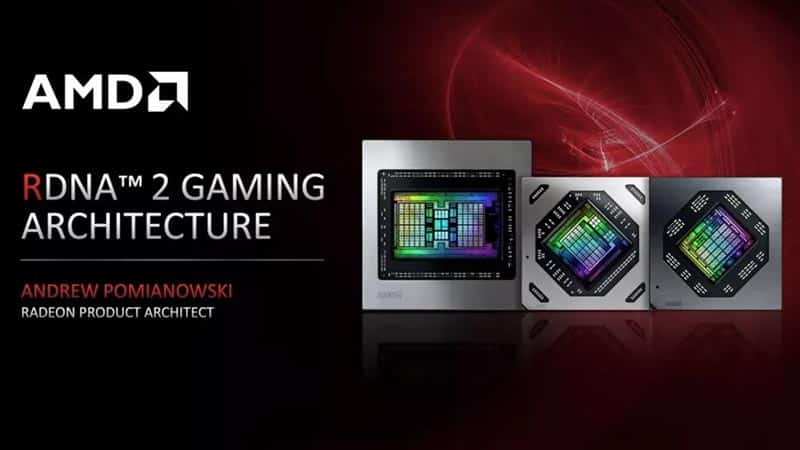
The next generation of gaming graphics has arrived with the launch of AMD’s RDNA 2 architecture. RDNA 2 is a significant upgrade over the previous RD-NA architecture, offering improvements in performance, power efficiency, and features. Performance-wise, RD-NA 2 offers a significant increase over the previous generation. AMD claims the new architecture is up to twice as fast as the previous generation in games that utilize DirectX 12 and Vulkan.
Regarding power efficiency, RDNA 2 is also a substantial improvement, offering up to 1.5x the power efficiency of the previous generation. One of the most exciting features of RDNA 2 is the support for real-time ray tracing. It is a cutting-edge rendering technique that can produce realistic lighting and shadows in games. Until now, ray tracing has been too computationally demanding to be used in real-time graphics. However, with RD-NA 2, AMD has finally made real-time ray tracing a reality. RD-NA 2 is a huge step forward for AMD’s graphics solutions. The new architecture substantially improves performance and power efficiency while supporting new features like real-time ray tracing.
New AMD RDNA 3: Details
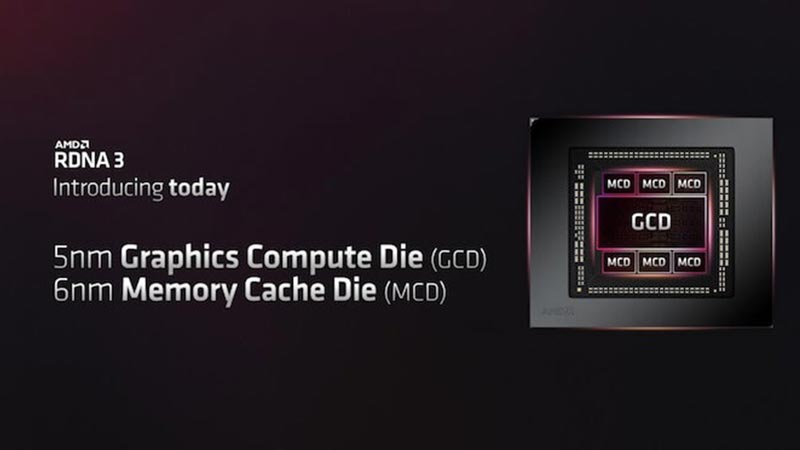
AMD is following up on the success of its RD-NA 2 architecture with RDNA 3, which is set to bring significant gains in performance and power efficiency. The company promises a 54% performance-per-watt gain with RDNA 3, which is ahead of its earlier promises of a 50% gain.
This significant increase in performance-per-watt will allow AMD to continue to compete with NVIDIA at the high end of the market while also delivering excellent power efficiency for gaming laptops and other power-sensitive devices.
RDNA 3 is also expected to enhance AMD’s ray tracing capabilities, making it even more competitive in the high-end graphics market. With RD-NA 3, AMD is again positioned to exceed expectations and deliver a superior gaming experience for gamers and enthusiasts.
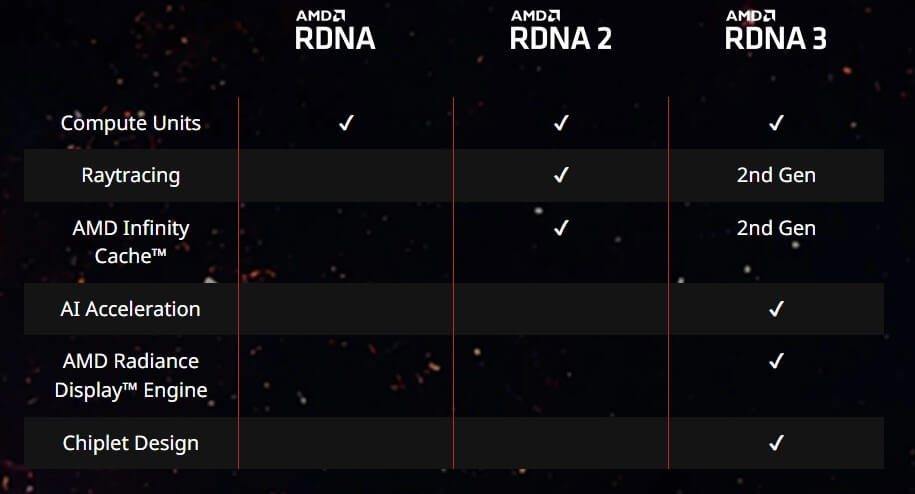
What are the benefits of AMD RDNA?
RDNA is a new microarchitecture designed by AMD. It is the successor to the GCN microarchitecture. RD-NA features many improvements over GCN, including:
– Higher clock speeds
– Lower power consumption
– Increased performance per watt
– New Instructions (Instructions Per Clock 2.0)
– Cache hierarchy redesign
– Better branch prediction
– Microcode updates
What are the drawbacks of AMD RDNA?
There are a few drawbacks to AMD RDNA. One is that it is less efficient than NVIDIA’s RTX platform. It means that it requires more power to achieve the same level of performance. Additionally, AMD RD-NA is less widely supported by game developers than NVIDIA’s RTX platform. It means that fewer games take advantage of its features. Finally, AMD RD-NA cards are more expensive than their NVIDIA counterparts.
How does AMD RDNA compare to other graphics cards?
Regarding graphics cards, AMD RDNA is in a league of its own. RDNA is a new architecture designed from the ground up to be the most efficient and powerful graphics card on the market. Other graphics cards are based on older architectures that need to be designed efficiently. RD-NA is less potent than they are and use more power to do the same tasks. RD-NA can also execute instructions faster than other architectures, rendering scenes quicker and providing a smoother gaming experience.
Conclusion
In short, AMD RDNA is a new graphics architecture that significantly improves performance and power efficiency over the previous generation. It’s used in the latest generation of AMD GPUs, some of the market’s fastest and most efficient GPUs. If you’re looking for a new GPU, check out AMD RDNA-based cards.

